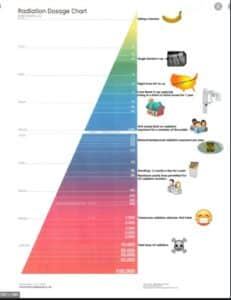
Everything You Need to Know About Dental X-rays
Dental x-rays, or radiographs, are taken during all new patient visits, periodically as needed, and prior to finalizing diagnosis. They allow the doctor to see areas of the teeth that are not visible to the human eye (even when using dental loupes that allow for extensive magnification). The biggest benefit of taking regular x-rays is to catch problems early on, when the extent of the problem is small and the solution or treatment is conservative and affordable. Serious dental conditions such as advanced decay, periodontal disease, and even cysts and tumors can be detected on routine dental x-rays. At River Oaks Dental in Jacksonville, FL 32217, we have the most advanced technology for taking dental x-rays. The new technology of digital x-rays maximizes your comfort while minimizing your radiation dose.
The first dental x-rays can be traced back to 1896, when scientists first discovered that rays could pass through human tissue but not bone or teeth. The technology of x-rays has greatly evolved over time and the improvements in materials have made it more comfortable for patients. These advancements have also simplified the diagnosing process by providing digital images which instantly appear into a patient’s file, higher quality definition, and simple ways to alter imagery such as brightening and zoom options.
Here is a list of dental x-rays that you should expect to take during your first appointment, what the image shows us, and its purpose.
Panoramic: This is a 2D x-ray which captures the entire mouth, including all teeth, upper and lower jaws, and the surrounding bones and tissues (including sinus cavities). Panos can reveal dental problems, including advanced periodontal disease, and other medical problems, such as tumors, jaw disorders, and sinusitis.
Bitewings: These show the visible part of molars and pre-molars and are used to locate decay and cavities between the teeth. Typically, bitewings are taken once a year during a hygiene visit which allows the dentist to monitor any changes to your oral health.
Periapicals: This type of x-ray captures entire individual teeth from the roots hiding underneath the gum line, to the visible surfaces of teeth. Periapicals allow us to detect unusual changes in the root and surrounding bone structure.
We ask patients to remove their jewelry to avoid metal from interacting with the rays and disturbing the images. Additionally, we protect our patients from the rays by placing lead aprons to cover their chest and any areas that could possibly be exposed. We understand that many worry about the amount of radiation they are exposing themselves to during dental or other medically necessary radiographs, but it is important to note that exposure occurs naturally every day. Additionally, the technology we use gives 70% less exposure compared to the film x-rays of the past. As with any medical procedure, you must weigh the benefits and risks of the procedure. Decades of research have proven that the benefits of dental x-rays far outweighs the minute risks associated with the minimal radiation dose received during dental x-rays. To calculate your individual radiation dose analysis, check out this great website: XRayRisk.com
Contact your friendly River Oaks Dental team if you have any questions or concerns about radiation prior to your appointment. We look forward to examining new and established patients – call us at 904.348.0416 or visit our website, riveroaksdentaljax.com, to schedule your visit.

- by admin
- on
